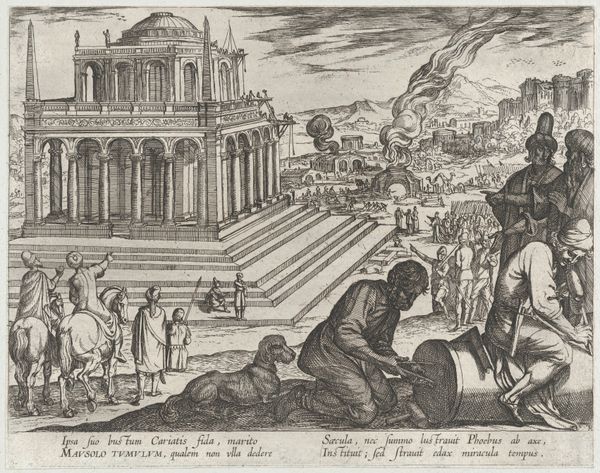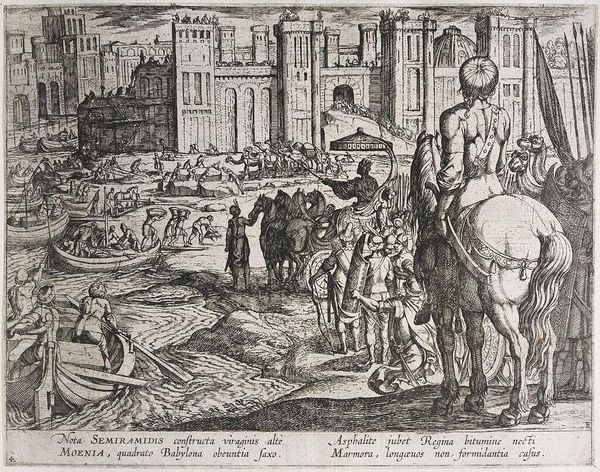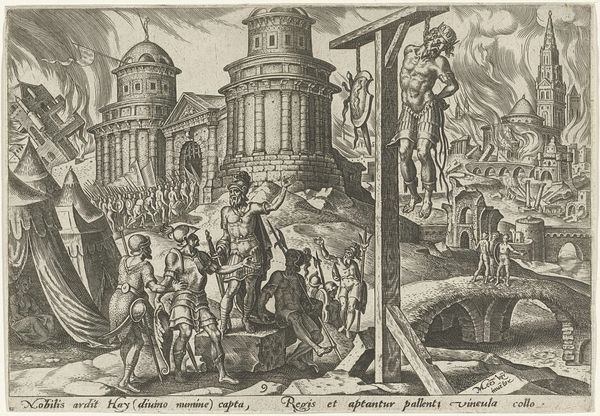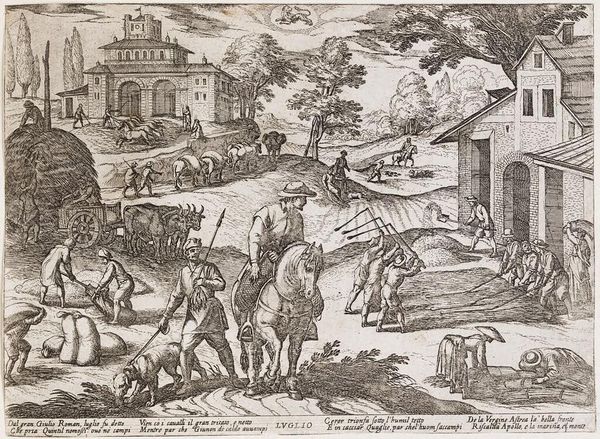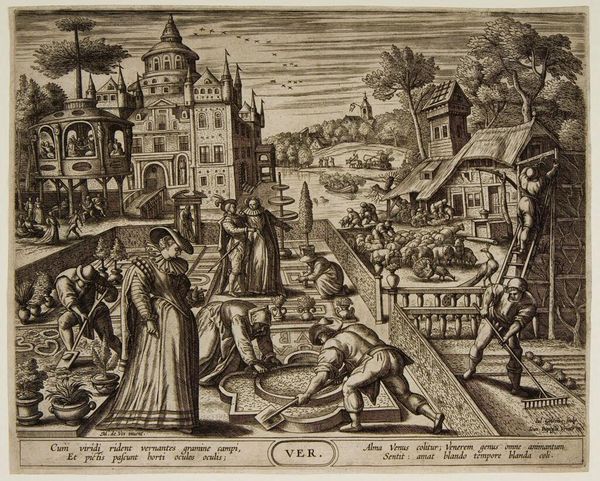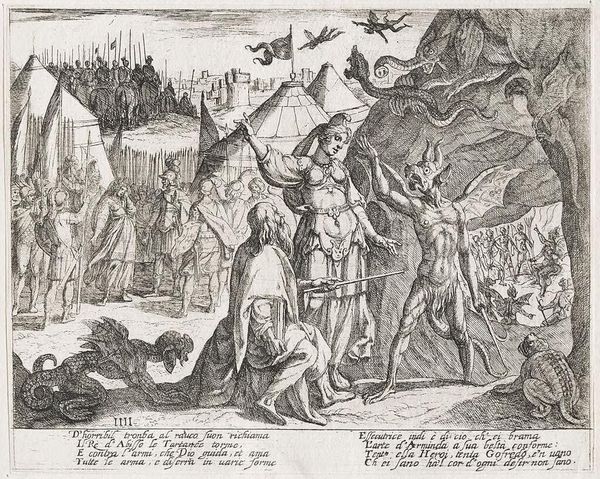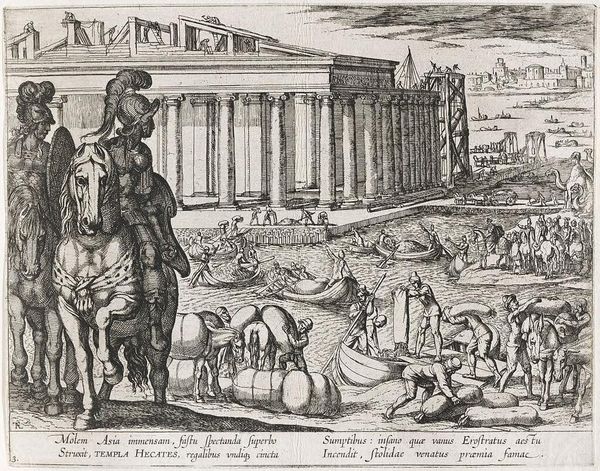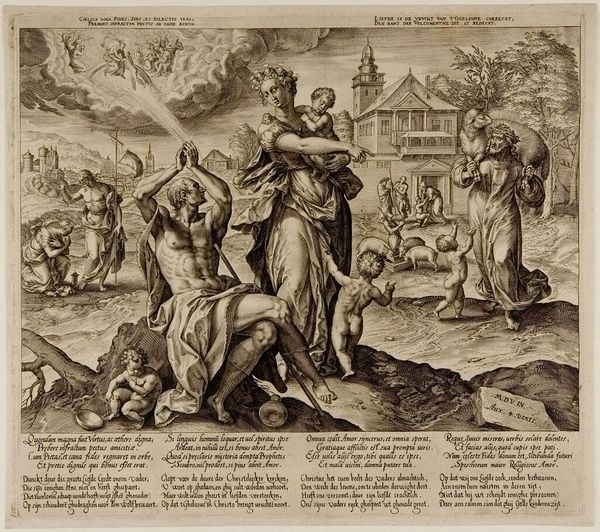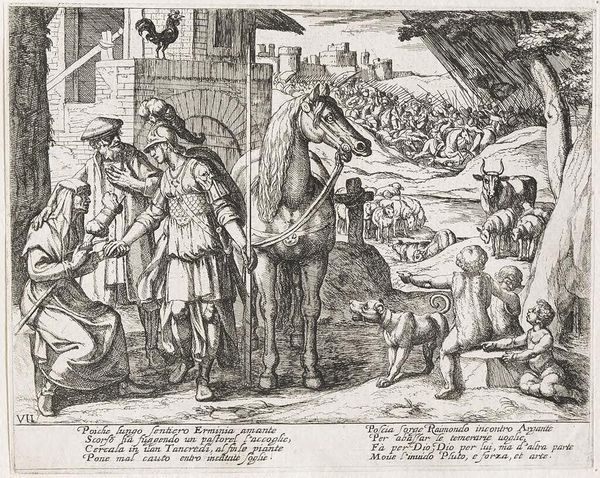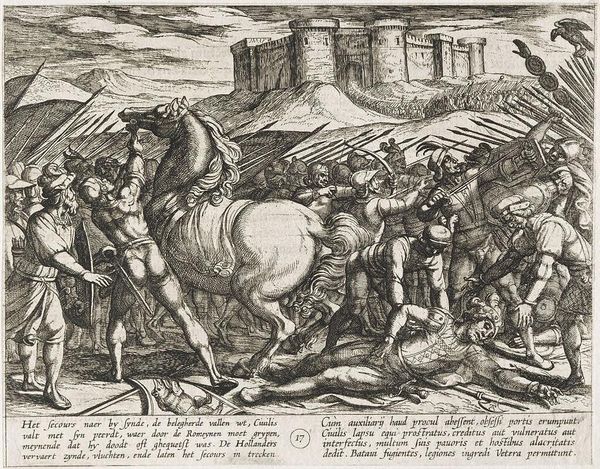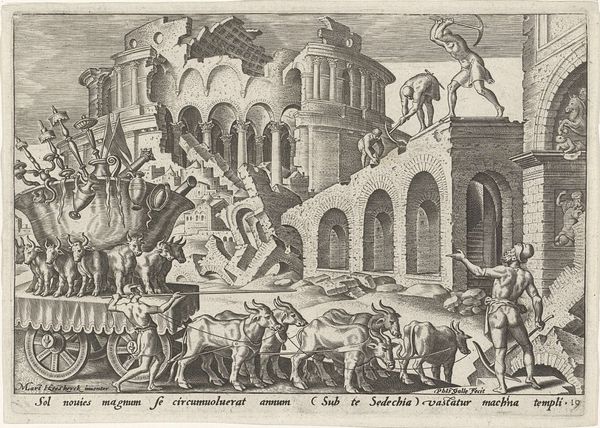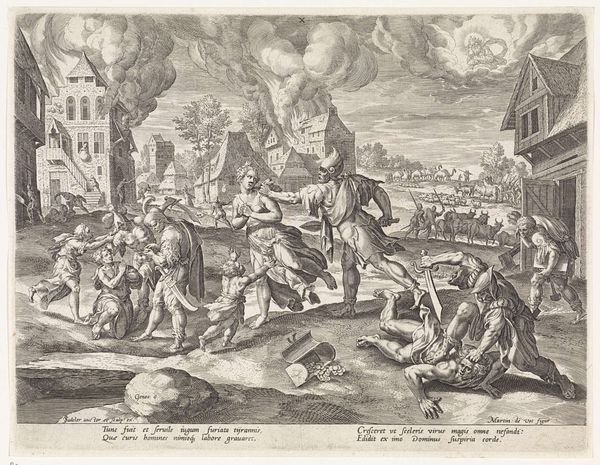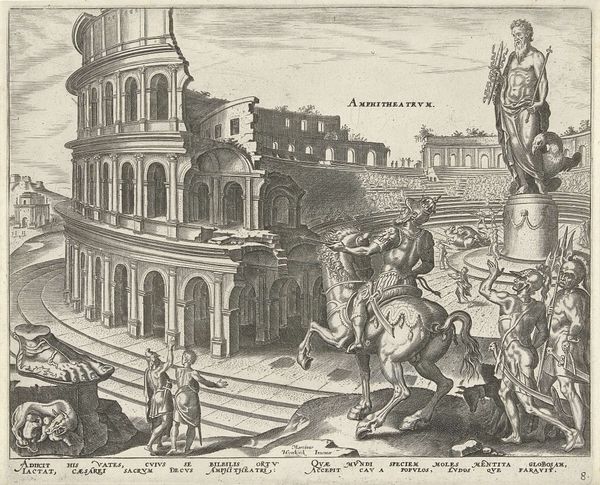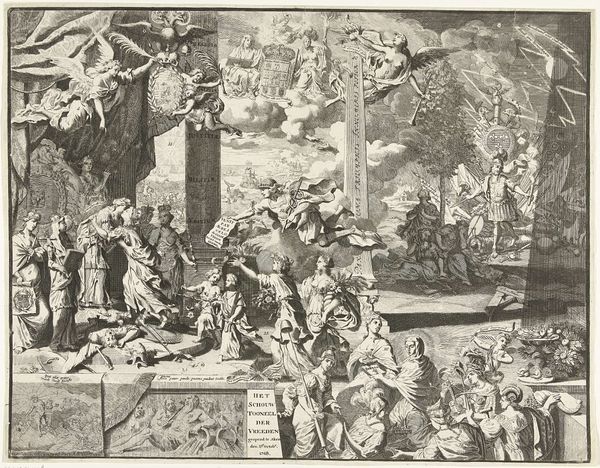
Copyright: CC0 1.0
Curator: Antonio Tempesta, born in 1555, created this etching, “The Tomb of Mausolus.” The piece resides at the Harvard Art Museums. Editor: My initial impression? It's chaotic, in the best way! So much is happening; the scene feels both meticulously planned and wildly energetic. Curator: The image depicts the Mausoleum at Halicarnassus, one of the Seven Wonders of the Ancient World. It's important to consider its historical context. The tomb was built for Mausolus, a satrap in the Persian Empire, and his sister-wife Artemisia II of Caria. Editor: Sister-wife, you say? That adds a certain zing! I’m drawn to the foreground figures toiling away. It gives the whole scene a wonderful sense of scale. They are working so hard to bring to life something that will crumble. Curator: Right, time is an important element, considering the tomb's fate. Tempesta made this piece centuries after its destruction. Here, we can consider themes of power, memory, and the inevitable decay of even the grandest achievements. Editor: Seeing the way the city is rendered, with that plume of smoke rising, evokes a strange sense of beauty amid destruction. A reminder that impermanence is its own kind of masterpiece. Curator: Indeed, and perhaps a reflection on the transient nature of empires themselves. Editor: This makes you wonder, doesn’t it? About what we leave behind, and what truly lasts.
Comments
No comments
Be the first to comment and join the conversation on the ultimate creative platform.
